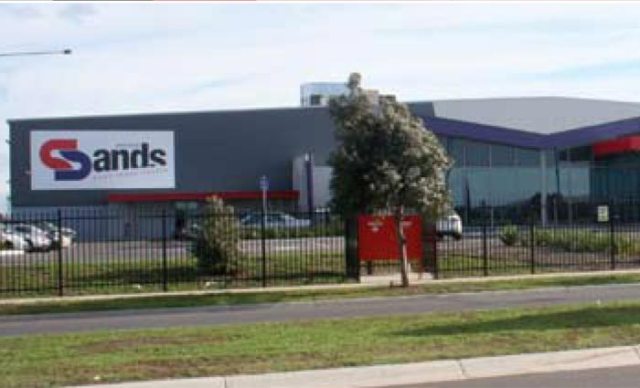
There are no printers without print buyers. Printers need customers, today more than ever before. But some buyers say there’s a gap between what they expect and what printers deliver. ProPrint talked to buyers from a range of different sectors to find out what they wanted from their print suppliers. What print did they buy? What is happening to their spend? And the all-important question: what should printers do to win their business?

Paul Andrews, managing director, Adstract Art
What Design and communications company
Established 1984
Staff Five plus contractors
Financials $500,000 to $1 million
Adstract Art is a Richmond, Victoria-based design house specialising in advertising. Managing director Paul Andrews says his company buys anything from digital printing to merchandise to web offset products. The firm produces items including booklets, annual reports, flyers and business cards. As the owner of the company, Andrews has the main responsibility for its print spend.
How much does Adstract Art spend on print? “It depends on the year and what we are doing,” Andrews says. “Some years, it’s been over half-a-million dollars, and other years it might only be a few hundred thousand dollars. We buy printing on behalf of our clients, so each item has a different role.”
However, what is clear is that the company isn’t buying as much print these days.
“It’s been going down because demand has gone down,” he says. “Clients are not buying the same volume; they’re not printing as much. Our biggest growth area has been in digital, with electronic direct mail campaigns and those sorts of things.”
This is what clients are demanding, so this is what the agency is providing, he says.
When it comes to print, how does Andrews weight ‘the big three’: cost, quality and speed? He says they are all pretty much equal. Still, if he has to single any out, he would say quality is particularly important.
The biggest challenge he has faced is printers being too slow to respond. As a result, his company has now started working closely with a trade printer he met at PacPrint. “A lot of the traditional printers we use are very slow to respond to the quoting process and clients demand quotes instantly these days, so the biggest thing is to have a print hub where people get instant quotes,” he says. “Our change of print supplier will help alleviate some of the challenges.”
Andrews can be critical of the way some printers operate. He sees many of them as being behind the times. “The challenge is a lot of the printers aren’t changing with customers’ demands. They’re still doing what they did 10 or more years ago. It’s taking two to three days to get a quote through. Pricing isn’t as competitive because they’re not keeping up with technology and addressing demand.
“We have had negative experiences with some printers, where you try a new print supplier and their quality isn’t what you expect, they deliver late and they try to get you to pay for their stuff-ups.”
So what do printers have to do to win Adstract business – what impresses him most? “Those that do are the ones with the latest gear and to-the-minute operations and processes. They’re pretty much switched on to responding to requirements and they’ve got equipment, and the job is done right first and pricing is competitive.”

Troy Stevens, production director, Cirrus Media
What Magazine publisher
Staff 300
Financials Turnover in excess of $50 million
Cirrus Media is perhaps better known under its former name, Reed Business Information. The Sydney-based specialist publishing house, whose brands include everything from magazines B&T and Australian Doctor to online directory Hotfrog, was bought from the global parent company by private equity firm Catalyst in early 2013.
“The main type of print that we buy is sheetfed for our magazines,” Stevens says. “A couple are web but probably 95% of our publications are printed sheetfed. Outside of that, there is small sheetfed jobbing work. I have a print distribution manager who has broad newspaper publishing and print procurement experience and that is essentially my background, too.
“In almost every case, we buy it for ourselves. We do a couple of custom publications but generally it’s all products owned by us. We’ll occasionally print an insert for a client, but generally it’s for ourselves.”
He says his company spends $3 million to $4 million a year on print.
So what purpose does the print serve? “We’re trying to generate leads for our clients and achieve engagement in the products; that’s essentially through quality journalism within the products. Our products are aimed at professionals in each of the sectors that we publish in healthcare, finance, media, travel, mining, manufacturing, building, construction and legal.
“They essentially want to communicate with their clients in a medium that will deliver the best results and the best return on investment for them, and that can depend on the market and what that medium is.”
In terms of cost, quality and speed, he says all three are certainly important. But in the end, he says, it really depends on the job.
“For different products of ours, they would have different weightings,” he says. “Cost and quality would always be important and speed is less important with some products but it holds more importance with weekly products that need to be turned around very quickly. To be fair, cost has been probably the major factor more so in recent years when times have become pretty tough.”
His company uses a number of printers. “We were with Geon, we now use Blue Star for the majority of our sheetfed work, and for our web work, we use Offset Alpine,” he says. “We also use some other sheetfed printers around – Bright Print and Rawson Graphics.
“A lot of the print work that we place, we’ve had longstanding relationships with most of our printers. Generally speaking, over the past five years or so, [we contract suppliers via a] tender process. But we’ve had longstanding relationships with most of our suppliers, be they printers or mail houses.”
However, volumes have dropped off over the past few years. “Just like any publisher, our advertising revenue in print is down. The other big challenge is getting our printed medium out to customers…and mailing costs are on the increase every year.”
As a result, the company has to keep a keen eye on getting the most out of its print and mailing costs – as do most magazine publishers.
What does a printer have to do to win business from Cirrus? What is Troy Stevens most impressed with?
“I’d say it would be their ability to keep pace with the changing market and satisfy what clients really need. Part of that is constantly communicating with your clients and re-evaluating what your client is trying to achieve from their print products. If printers stand still and don’t constantly re-evaluate the client’s needs, and if they just keep pitching on price and don’t really talk to their clients, then they will be the ones who have troubles down the line.
“Service levels have to stay high. If you don’t service your clients, it doesn’t matter how cheap you are, you are not going to win business. You can come in with the best possible price but if you have a shocking reputation for delivering on time and servicing, you’re not going to win the business. Service and reliability have to be number one.”
And that, he says, very much connects with the problems the industry is now facing. Printers need to ensure that their clients are getting a good return on their investment.
“The biggest challenge would be keeping the cost of print relevant to the purpose it serves for our market, and I say that from the management point of view. That’s talking about the return on investment for your print.
“There’s only so much they can be squeezed. I can see their predicament and I can see what goes on in the industry and that’s not something that owners of businesses on my side have to worry about getting close to.”
Stevens has had plenty of bad experiences, too. “If printers are doing things badly, they are not delivering on a regular basis. The other [negative] generally from an industry point of view is that they cannibalise each other’s work. That’s probably driven prices down and caused printers to go under.”

Andrew Munnoch, product development & print production manager, Roadshow
What DVD distributor
Established 1973
Staff 80
Financials Home entertainment division turnover $190 million
Roadshow Entertainment is the DVD distribution business of international entertainment and media company Village Roadshow. Andrew Munnoch’s main print purchases are for packaging and point of sale. The company would spend about $2 million on packaging and about $600,000 on point of sale. Munnoch does the buying.
He says costs, quality and speed are all equally important. “Cost is a huge thing because obviously with digital platforms, our physical market is in decline.”
He says that as online becomes the predominant way to shift products, this in turn increases the push for on-demand production for retail sales. “We can get an order for half-a-million DVDs and we have to have it replicated in-store within three weeks. On-demand is a big factor.
“I don’t keep a massive stable of suppliers. I think that’s because I do need reliability. When I ask for something to be delivered, it has to be delivered. I would put cost and reliability first, and speed is a sub-sector of reliability. If you’re asking for reliability, you’re asking for things to be on time.
“The biggest pressure on any printer or on me is making sure we buy at the right price. I hate to say it, but cost is a big factor,” says Munnoch.
He says the company used to get its printing from Geon but now goes to Silverwater, Sydney-based CCS Media. It also has a printer in Marrickville, Sydney and uses other digital printers.
Munnoch says the key to good buying is knowing how to manage suppliers. “Printers are renowned for being unreliable so the worst that can happen would be a printer falling over and not delivering on time. We have a replicator sitting there to make our product and it relies on me delivering components.
“We are very driven by release dates. We have films that have a short time in the sun, less than four weeks, so point of sale and missing a shelf date is disastrous. The biggest challenge I have is when a printer doesn’t get a job done in time.
“I worked in print for 20 years so I’ve heard every excuse in the book. If a printer comes to me and says we have run behind because of this, this and this, I’ll try to help. But a smart buyer these days needs to manage himself. I never tell a printer a real date, I always give the printer the day before or two days before.”
He adds that Roadshow is spending less on print and more on digital, including Facebook and YouTube.
Printers are more likely to get work if they are innovative. “Innovation is paramount, with new products, packaging ideas, different ways of manipulating paper and creating awareness of new products. And from a packaging side, there are unique ways of presenting products, new designs and displays.”
And a printer’s biggest mistake? “Over-promising and under-delivering.”

Sarah Simpson, supply chain specialist, NPS MedicineWise
What Provider of healthcare education
Established 1980
Staff 200-220
NPS MedicineWise is a government-funded non-profit that educates health professionals, including GPs and pharmacists, and consumers on the use of quality medicine.
Sarah Simpson says: “We print a range of products depending on what suits our promotion, whether it be brochures or postcards. We do counter mats for pharmacies, we do Perspex stands that go on counters at pharmacies. It really depends on what we’re promoting and how we feel we’ll get the message across in the best way. It depends on the product and who we’re targeting, it depends on the end user and how we feel they would best soak up that information.
“We have two areas: consumers and health professionals. If it’s consumers, we are educating them on the topics we are promoting. At the end of the day, we’re looking at affecting a change of behaviour and educating them. With the health professionals, it’s educating them as well. We have field staff that give talks on the topics and chat to pharmacists, and they’ll take our products with them.”
Simpson is one of the key people buying print for the group, which spends roughly $1 million a year on print. Which is more important for her: cost, quality or speed? “Quality is first, I would say, price second and then speed. You could swap them around, however, depending on what our timeline is at our end. For us, quality is paramount. But we take all three of these into account when we’re buying print. It’snot just the cheapest who wins.”
She says the biggest challenge is trying to predict the demand for a product. “I don’t know whether or not our suppliers could actually help us with that, other than looking at trends and suggesting print-on-demand.”
But she expects printers to do more than provide quotes. “We look for suppliers who can work with us and bounce ideas off us and suggest ideas. They don’t just take the brief we give them. If they can think of something else and a better way of producing it, then they can bounce ideas off us. It’s a two-way street. It’s about bringing new ideas to the table and better ways of doing things with new technology.
“For us, it’s customer service and that two-way street of coming back with ideas. Printers have seen everything under the sun and different ways of getting products out there, and for us that’s important. That’s really important for us in our role here, it’s about communication and partnership where you’re giving each other as much information as possible, and at the end of the day you get a better product for it.”
Simpson says her group’s print spend remains steady. “It’s not increasing but not decreasing either at this stage. We are at the moment going through a four-year plan and looking at what we’ll do for the next few years. Once we get to the end of that, it could determine a change in what we do or don’t print. In that sense, I could see it possibly decline, but at this stage it’s still holding steady.
“From a print perspective, if it’s a product we’re giving customers to use, like a dosing chart, practicality would be an issue. We have to ensure the correct stock is chosen, that it can be written on, and doesn’t smudge with a felt tip pin. The product has to be varnished. Customers would expect the product to be of a high enough quality for its expected use.”
And finally, what could printers do better? Be more honest, she says, and don’t over-promise.
“At the eleventh hour, they will say ‘sorry, no’. And then you’ll get excuses like ‘the machine broke down’,” she says.
“I know it’s hard for them but they should be honest upfront and say whether or not they can do it, or that they are not geared up to do it. Often it’s a workaround or compromise that we’re willing to make, but if we’re not aware of it upfront it makes us look extremely bad and has flow-on effects.”

Ali Holmes, marketing & communications, Laing & Simmons
What Nationwide real estate franchise business
Established 1967
Franchises 37
Ali Holmes works for the parent company of this NSW-based real estate franchise network, which was purchased by its current owners, the Independent Property Group, in 2012.
The types of print include everything from typical corporate stationery, to more sector-specific things such as brochures and ‘DL drops’ for agency marketing and property sales to signage.
Holmes says: “Physical print commodities achieve a dual purpose: advertising a specific property while simultaneously delivering brand exposure for Laing & Simmons.”
Each franchise buys their own print when it comes to the likes of property-related commodities, agency promotion and stationery. “However, any print suppliers that franchisees wish to order from must first be pre-approved by us – a process that includes provision of samples that meet our strict criteria for colour reproduction and quality control,” she says.
Network-wide, the franchises would spend hundreds of thousands of dollars a year in print.
“Print volumes are decreasing, although I can’t quantify it exactly on behalf of our entire franchise network. Digital marketing has eclipsed traditional channels for both lead-generation and property advertising, but we still encourage our franchisees to use DL drops, brochures and signage to complement their digital marketing campaigns.
“This is important in the real estate industry where a significant section of the target audience demographic is older, not-so-tech-savvy and, therefore, needs to be reached by more traditional means, like letterbox drops and outdoor marketing, such as signs.”
Holmes says “quality is always paramount for me”, and that turnaround time and pricing become determining factors when deciding between printers who deliver products of equivalent quality.
“Plus prompt communication and the ability to follow instructions accurately always makes a good impression. Also, printers that keep abreast of new innovations and pass these onto us through evolving product technologies.”
Holmes says the last time she added a new supplier to the roster, its web-to-print system was the clincher.
“The printer in question had developed a new online ordering system that enabled instant proofing, quick turnaround and template integration, which limited the ability for franchise offices to order items ‘outside brand’.”
On the other hand, she also has horror stories about printers getting it wrong. “We ordered some signage vinyl that turned up in green instead of blue! Basically the printer had taken it upon themselves to convert our stated CMYK colours to PMS rather than asking us for a PMS reference – the results were disastrous.”

Sandy Grose, materials production manager, DeakinPrime
What Training provider for corporate sector
Established 1993
Staff 100
Financials $7 million
The corporate education arm of Deakin University, DeakinPrime, prints for clients like Coles, Target, Jemena, Ford and the fire brigades. It produces envelopes, stationery, business cards, note pads, folders and dividers.
Sandy Grose is the buyer. She says the company used to spend millions on print, but now it’s down to about $200,000. “Basically, we have teams that deal with the client and they find out what the client wants; and we have teams of graphic designers and editors and they do the artwork and then we make a decision.”
She says most of the printers used are local, from Geelong where the university is based.
What do printers have to do to get work? “We look at printers we have used before that we are confident have the quality and the service and delivery. If we know each of them is going to provide good quality and good turnaround time, then we look at the price. If one is a hell of a lot cheaper than the others, then we’ll go with that one.
“But I don’t like playing games. I don’t want them to offer me tickets to the football if I’m going to be paying more for my print. I need them to be honest.
“There was a printer we used to deal with and they wouldn’t finish on time and then say to us: ‘We had a machine breakdown’. That used to happen all the time, so we stopped dealing with them. Or there was this other printer who used to try to take us out all the time on fancy golf days,” Grose says.
Comment below to have your say on this story.
If you have a news story or tip-off, get in touch at editorial@sprinter.com.au.
Sign up to the Sprinter newsletter



